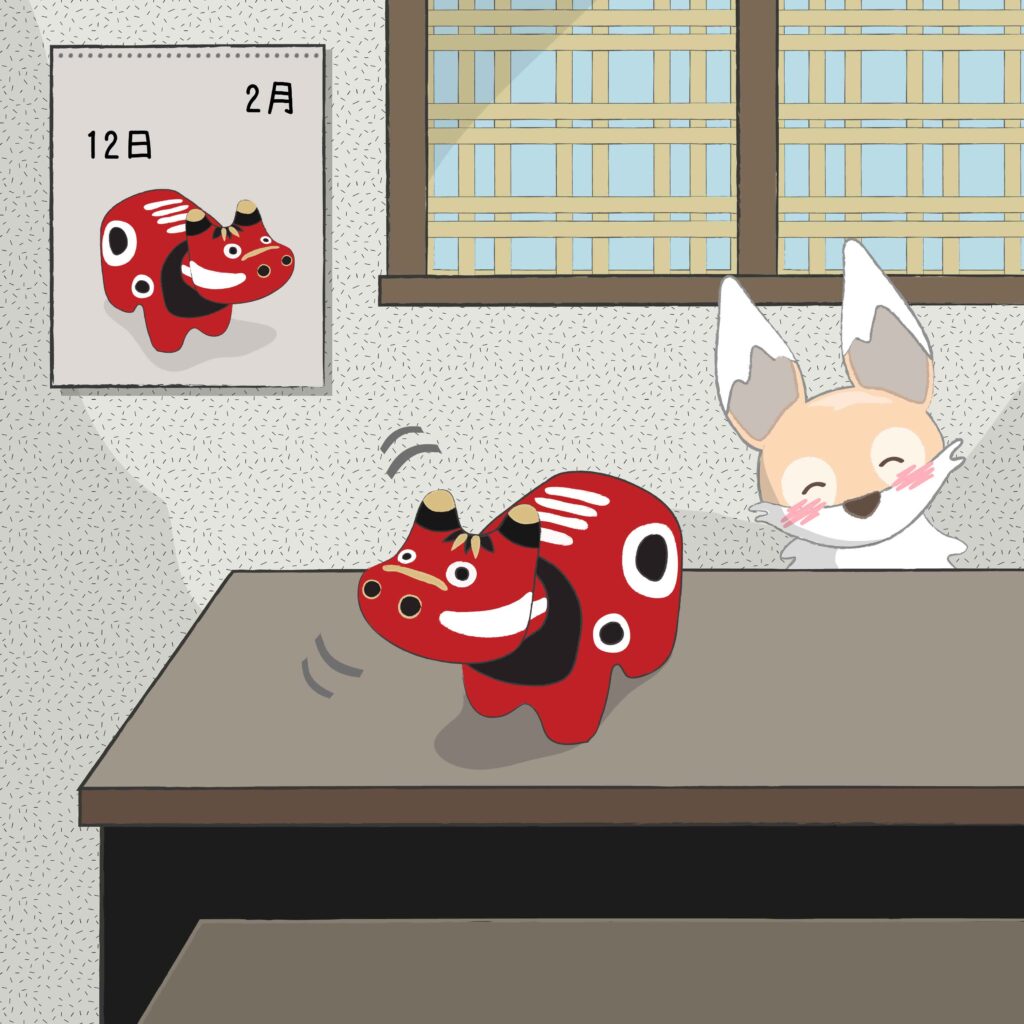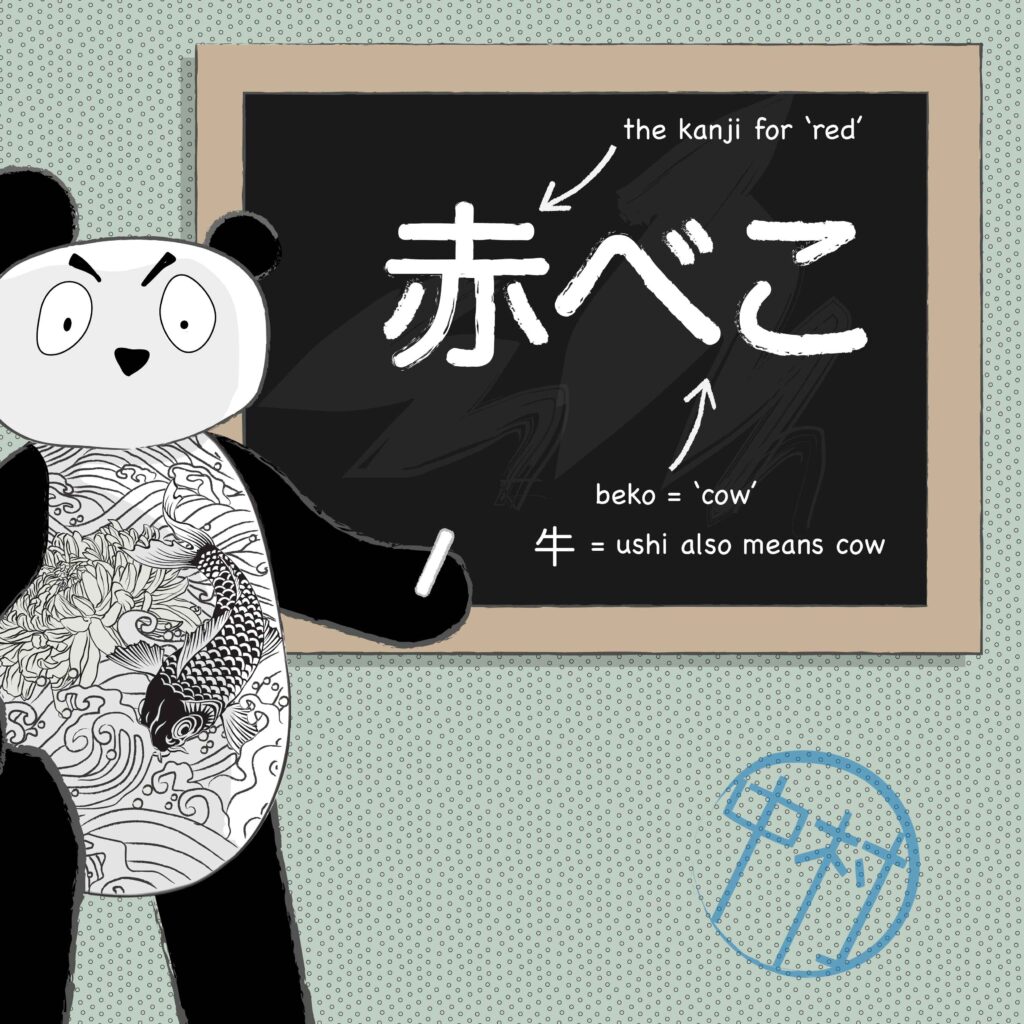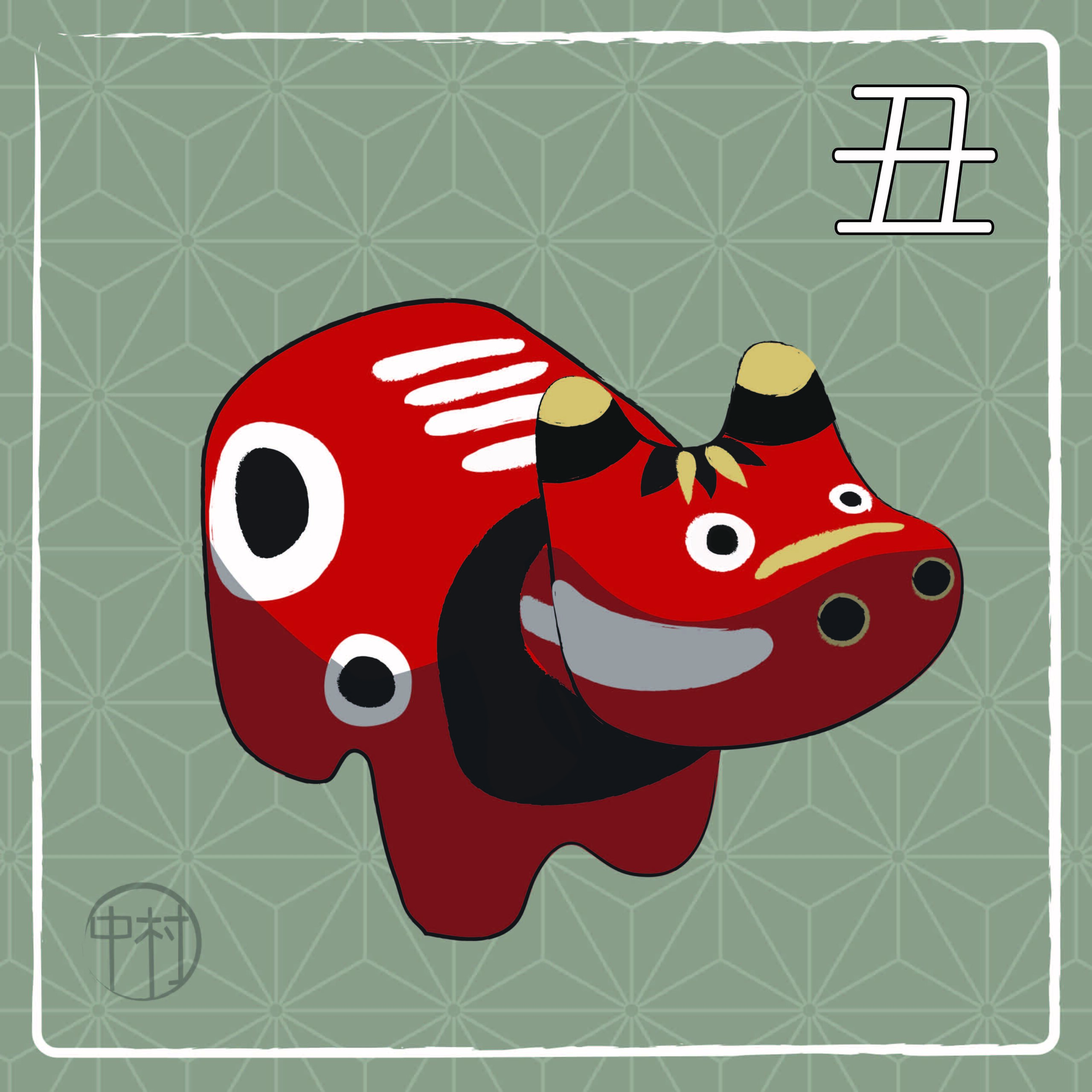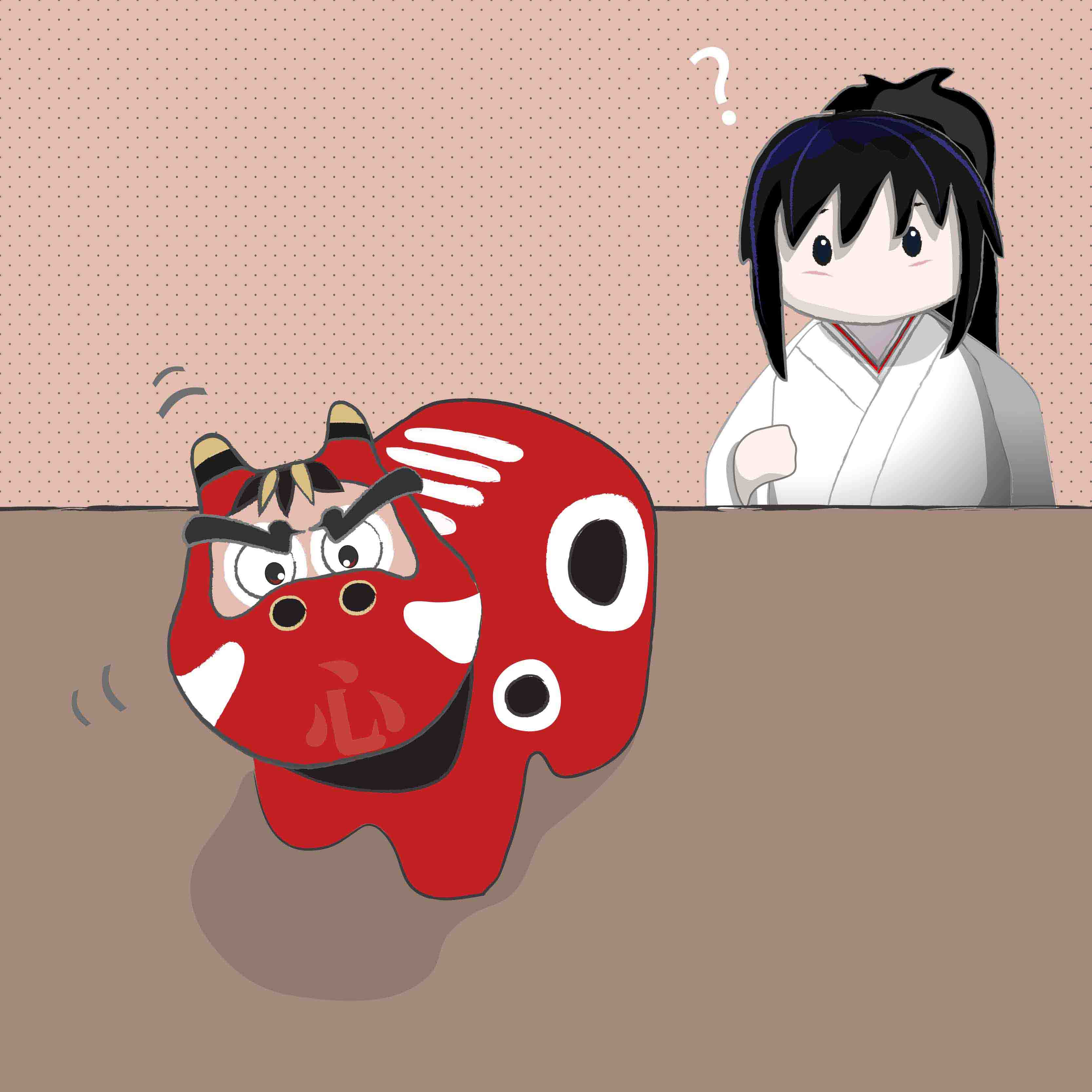After the difficulties of 2020, which meant that the Bamboo Bathhouse had to close for a large part of the year due to the global pandemic of COVID 19, the residents of the bathhouse were really hoping that a change in animal zodiac year might mark an upturn in the fortunes of the residents of Tokyo and beyond.
“So much for the optimism of the rat!” remarked Miko-chan, who had tried to spend 2020 helping out by making fabric masks with Mama Kōjin and ensuring that neighbours were doing ok. Although there had not been a lockdown in their neighbourhood, the residents had reduced their comings and goings and were hoping that they would soon be able to see their friends at the sake brewery once again.
Kiku looked at the wall calendar. “Well, now it is the year of the ox – which is often shown as a cow in Japan”. Boss Panda entered the kitchen and placed a bright red, nodding cow on the table. “Ooh, I like those!” cried Miko-chan with delight, as she gently tapped the cow’s nose to set its little head nodding away. “You will see a lot of these around during this year I think,” explained the old bear. “It is an akabeko folk toy which comes from in the Aizu region of Japan, which is the westernmost part of Fukushima prefecture, towards the north of the main island of Japan. They were first made at around the beginning of the 17th century.”

Kiku was looking at the characters Boss Panda had written on the board. “Ah, I can see that ‘aka’ means red and ‘beko’ means cow!”

“That’s right”, said Boss Panda. “They are said to have been inspired by a legend that told of a red cow who lived in a temple in Yanaizu, Fukushima in the 9th century. They are thought to ward off illness, and of course red is seen as a fortune-bringing colour, both here and in China, so it is a good motif for this zodiac year. But you will see all sorts of cow motifs around, on sweets, stationery and packaging.
“The word for ox in Japanese is ‘ushi’,” continued Boss Panda, which is written as ‘丑’ , so the year of the ox is known as ushidoshi (丑年).”
They all smiled at the nodding cow on the table, and hoped that 2021 would be a much brighter year.

Lucky signs for those born in the year of the ox are:
Lucky numbers: 1, 4
Lucky colours: blue, yellow, green
Lucky flowers: lily of the valley, bamboo
Lucky directions: East, South-East
People born in an Ox Year are said to be strong and hardworking, honest, earnest, as well as trustworthy, calm and patient. They can be stubborn and have a strong faith in themselves so don’t like to fail or be challenged. They are logical, have a lot of common sense and are not quick to anger, but they can be serious, quiet and not very social, which may make them seem dull to others.

Notes:
The New Year in Japan is now celebrated at the beginning of January according to the Gregorian calendar (after the Japanese moved to this calendar in 1873), but Japanese people still mark the beginning of the lunar New Year with the setsubun rituals and customs. In Japan this used to be celebrated the day before Chinese New Year, but these days it has generally been fixed as February 3rd or 4th (and very occasionally the 2nd), rather than moving along with the date of the actual Chinese New Year, so some years they might take place in the wrong order, however this is not a problem as the beginning of the lunar New Year as celebrated in China is not a public holiday or really recognised, and only really celebrated in places like Yokohama’s Chinatown.
The zodiac animals are still recognised each year (for example on New Year greetings cards), and people also buy objects or themed items that represent the current year, such as hariko* figures, stationery and foods with special packaging.
*Hariko is the Japanese term for a folk craft similar to papier-mâché that differs from region to region – layers of washi paper are pasted either over or into a mould or over wooden frames before being painted with gofun (a type of whitewash made with the powder from oyster shells) and glue and then colour.

